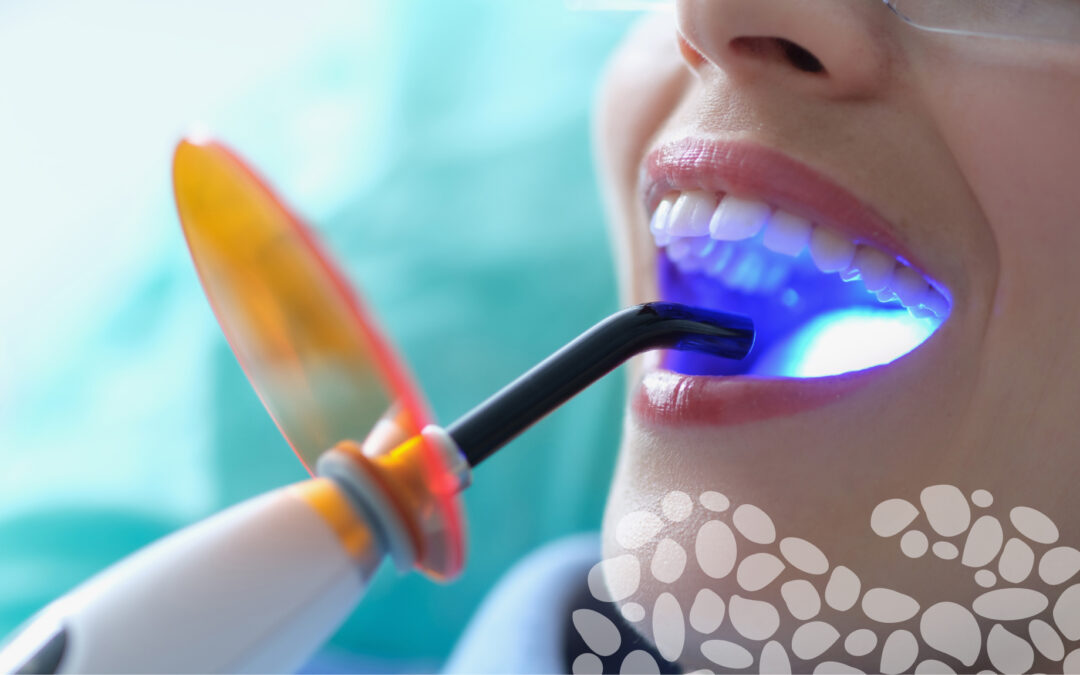5 Restorative Dentistry Solutions
Ah, Halloween—the ghoulishly delightful time of year when we are all a little guilty of indulging in a few too many sweets. But those ghost-shaped gummies and pumpkin pralines can be frightful for our teeth, leading to new cavities or worsening any active tooth decay. A dull ache while enjoying a hot cup of cider or a sharp twinge when biting into a caramel apple could indicate the presence of a cavity. But fear not! The world of restorative dentistry is ready to come to your rescue. Timely treatments can banish those cavity goblins, restoring your healthy smile and ensuring your teeth remain more treat than trick.
Why does tooth decay happen?
Tooth decay doesn’t occur directly from sugar, but rather, it’s the end consequence of a chain reaction that sugar sets in motion. When we snack on a candy bar or sip on a sugary soda, we’re not just feeding ourselves—we’re also feeding the bacteria that live in our mouths. These bacteria aren’t inherently evil, but they have a sweet tooth just like us.
As these bacteria feast on the sugar, they produce a byproduct—acid. This acid is the real culprit behind tooth decay, as it gradually erodes the hard, protective enamel covering our teeth, leading to cavities. Over time, if left untreated, this acid attack can even reach the inner layers of the tooth, causing pain and possible tooth loss.
Candies, especially those sticky-sweet Halloween treats we all love, are particularly adept at clinging to our teeth, giving those acids more time to do damage. Acidic drinks can also erode enamel directly, providing a double whammy to tooth health.
What do cavities look like?
Cavities usually manifest as visible holes or pits in your teeth. These are the actual “cavities” that give tooth decay its common name. In some cases, you might also notice unusual discoloration on your teeth, such as black, brown, or yellow patches or stains. These are areas where the decay is active and has changed the color of the tooth enamel. However, not all cavities are visible to the naked eye. It’s more common to feel the signs of tooth decay than to see it.
Cavities often signal their presence as toothaches or teeth sensitivity to hot, cold, or sweet foods and drinks. This happens when the decay has reached the inner layers of the tooth, exposing the nerves to temperatures and food particles. Another common symptom is pain when biting down or eating. This can occur when the decay has formed a cavity large enough to cause your tooth structure to weaken.
How can tooth decay be treated?
Restorative dentistry plays a pivotal role in preserving tooth structure, preventing further decay, and restoring oral health. It encompasses a variety of dental treatments designed to repair or replace damaged or lost teeth.
- Dental Fillings: These are the most common method of treating cavities. The decayed tooth material is removed, and then the cavity is filled with materials like composite resin, porcelain, or amalgam to restore the tooth’s shape and function.
- dental crowns: When a tooth is severely damaged or decayed, a dental crown (also known as a cap) is often used. This treatment involves placing a custom-made cover over the entire tooth to restore its natural shape, size, and strength.
- Root Canal Therapy: This involves removing the infected or inflamed pulp from inside the tooth to prevent further damage and save the tooth. After the pulp is removed, the inner chamber is cleaned, disinfected, filled, and sealed. A crown is then often placed to protect the hollowed tooth.
- Inlays or Onlays: These are used when the tooth’s damage is too extensive for a filling but not extensive enough to need a crown. Inlays and onlays are created by a dental laboratory and then bonded to the tooth during a later visit to the dentist.
- Tooth Extractions: When a tooth is so severely damaged or decayed that it cannot be saved, extraction is often necessary. The missing tooth can then be replaced with a dental implant or a bridge to restore chewing function and prevent other teeth from shifting to fill the gap.
By choosing the most appropriate restorative procedure, dentists can effectively halt the progress of tooth decay and help patients maintain a healthy, functional smile.
How can I prevent future cavities?
Almost all cavities are preventable through a series of simple, consistent oral health practices. Here are the key practices to prevent future cavities.
- Proper Brushing: Brush with fluoride toothpaste after every meal. The fluoride makes your teeth more resistant to the acids from plaque bacteria.
- Fluoridated Mouthwash: For extra protection, use fluoride mouthwash. It washes away leftover food and strengthens tooth enamel.
- Stay Hydrated: Drinking plenty of water aids in saliva production, which naturally protects against cavities by washing away food particles and neutralizing harmful acids.
- Regular Dental Visits: Regular checkups and professional cleanings can identify potential issues early. Additionally, your dentist can provide preventive treatments such as dental sealants and fluoride treatments.
- Dental Sealants and Fluoride Treatments: Sealants are a protective coating applied to the chewing surfaces of the back teeth, while fluoride treatments strengthen tooth enamel.
- Avoiding Constant Snacking and Sipping: This exposes your teeth to acids continuously, increasing the risk of tooth decay. If you do snack, try to brush your teeth or at least rinse your mouth with water afterward.
By consistently following these practices, you can significantly reduce your risk of developing cavities, ensuring a healthier and brighter smile.
Consider scheduling a post-Halloween dental checkup and cleaning.
As Halloween approaches, the risk of developing cavities becomes significantly higher due to increased consumption of sugary treats. The acidity produced in your mouth when you enjoy those Halloween candies can damage your enamel, leading to tooth decay. Therefore, it’s a smart move to schedule a post-Halloween dental checkup and cleaning. This proactive step will help ensure any potential threats are addressed promptly, keeping your oral health in check.
Book your appointment today at Metro East Dental Care and take the first step toward a bright, cavity-free smile.

